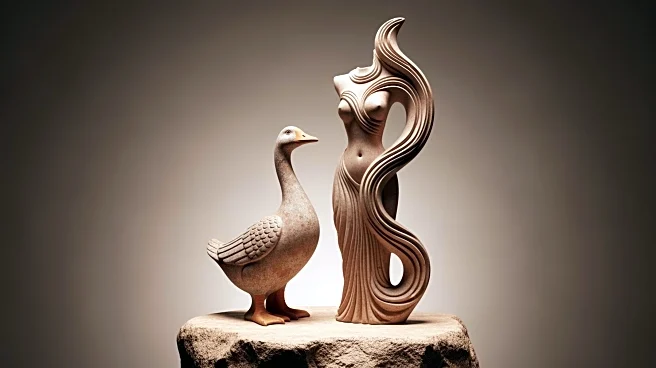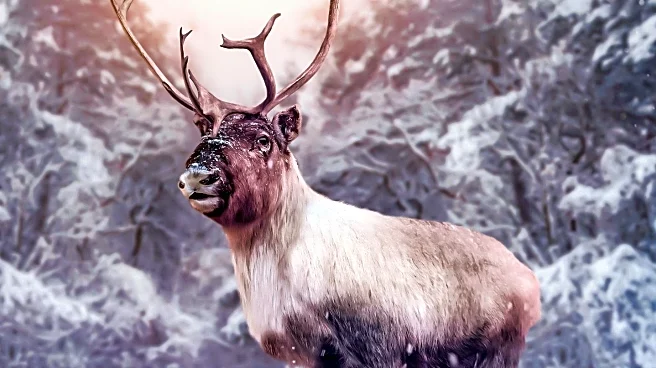What's Happening?
A 12,000-year-old clay sculpture discovered in Israel depicts a goose on the back of a woman, which archaeologists believe may represent an animistic mythological scene. The figurine, found at the Nahal
Ein Gev II archaeological site, is thought to illustrate a ritual involving a gander mating with a human. The sculpture's significance was recognized in 2024, and it is considered the earliest known depiction of human-animal interaction.
Why It's Important?
This discovery provides valuable insights into the cultural and spiritual practices of the Natufian people, who were predecessors to Neolithic agricultural communities. The figurine offers a glimpse into the animistic beliefs and artistic expressions of ancient societies, contributing to our understanding of human history and evolution. It also highlights the complexity and creativity of early human art, challenging modern perceptions of prehistoric cultures.
Beyond the Headlines
The figurine raises intriguing questions about the role of animals in ancient mythologies and the symbolic significance of human-animal interactions. It may prompt further research into similar artifacts and the cultural narratives they represent. The discovery also underscores the importance of preserving archaeological sites and artifacts to uncover the rich tapestry of human history.













